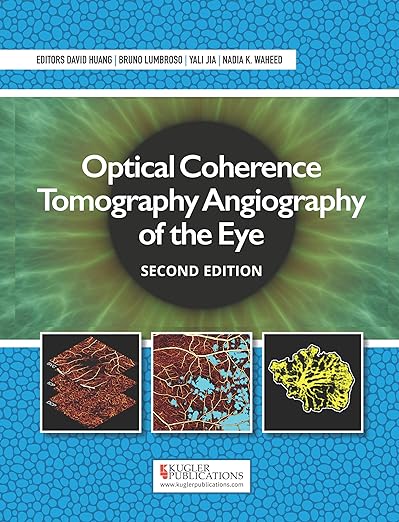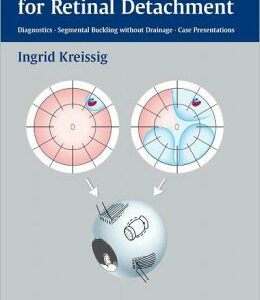No products in the cart.
Ophthalmology Books, General Ophthalmology
Optical Coherence Tomography Angiography of the Eye, 2nd Edition (Converted PDF)
by David Huang (Author), Bruno Lumbroso (Editor), Yali Jia (Editor), Nadia Waheed (Editor)
Language: English
Edition : 2
Format : Converted PDF
File Size : 182.7 MB
$12.00
Optical coherence tomography angiography (OCTA) has undergone tremendous growth since its first commercial introduction in 2014. Because it provides injection-free, capillary-resolution, 3-dimensional angiography of the retina and choroid, OCTA is likely to overtake fluorescein as the most important angiographic imaging technique in the eye. Nearly all manufacturers of ophthalmic OCT now offer OCTA products. A PubMed search now yields over 5700 articles on OCTA and related terms.
Clinical investigators have already found a use for OCTA in almost every category of retinal and optic nerve diseases. This book is meant to bring together all this information so clinicians can have one authoritative text to turn to as we begin to use this new imaging modality that was never taught when we were in formal training.
Table of contents
Introduction
Dedication
About the Editors
Contributors
1. Optical coherence tomography systems for angiography
2. Optical coherence tomographic angiography algorithms
3. Vascular anatomy of the normal retina and choroid
4. OCTA of the normal anterior eye circulations
5. Artifacts
6. Quantification
7. Artificial intelligence in optical coherence tomographic angiography
8. Terminology: a new standard
9. AngioVue SSADA OCTA on the Optovue SOLIX Spectral-Domain OCT
10. Optical microangiography with AngioPlex® and PLEX® Elite systems
11. Optical coherence tomography angiography imaging on the Topcon Triton and Maestro2 systems
12. NIDEK Mirante OCT angiography
13. OCTA on the Heidelberg spectralis spectral-domain OCT
14. OCTA on the Optopol REVO NX spectral-domain OCT
15. OCTA on the Canon OCT-HS100 and Xephilio OCT-A1 Spectral-Domain OCT
16. Exudative neovascular age-related macular degeneration—Type 1, 2 and 3 neovascularization
17. Retinal angiomatous proliferation—type 3 choroidal neovascularization
18. Short- and long-term follow-up of macular neovascularization response to antiangiogenic treatment
19. Nonexudative neovascular age-related macular degeneration
20. Non-neovascular age-related macular degeneration
21. Polypoidal choroidal vasculopathy
22. Macular telangiectasia
23. Central serous chorioretinopathy
25. Nonproliferative diabetic retinopathy
26. Subclinical neovascular diabetic retinopathy
27. Proliferative diabetic retinopathy
28. Retinal venous occlusion
29. Retinal arterial occlusion
30. Plexus-specific occlusions in retinal vascular diseases
31. Paracentral acute middle maculopathy
32. Inherited retinal degenerations
33. Pathologic myopia
34. Multimodal imaging and the role of optical coherence tomography angiography in retinal vasculitis
35. White spot syndromes
36. Choroidal tumors
37. Radiation retinopathy
38. Open-angle glaucoma
39. Primary angle-closure glaucoma
40. Optic neuritis and multiple sclerosis
41. Alzheimer’s disease
42. Corneal neovascularization
43. Ocular surface and iris tumors



![[Original PDF] Synopsis of Clinical Ophthalmology: Expert Consult – Online and Print, 3th Edition](https://ophthalmologyebooks.store/wp-content/uploads/2022/12/9780702050374.jpg)
![[Original PDF] Ryan’s Retinal Imaging and Diagnostics](https://ophthalmologyebooks.store/wp-content/uploads/2022/12/9780323241908.jpg)
![[Original PDF] Pediatric Ophthalmology and Strabismus, 4th Edition](https://ophthalmologyebooks.store/wp-content/uploads/2022/12/9781455737819.jpg)